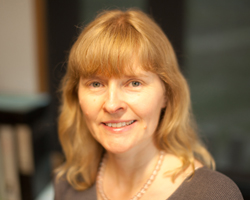
Prof. Judith Driscoll
Network Director, Materials Theme Head
Materials Science of Functional Oxides
About me
I am Professor of Materials Science in Cambridge and Royal Academy of Engineering Chair in Emerging Materials. I am Visiting Staff Member at Los Alamos National Laboratory, New Mexico, and am founding Editor-in-Chief of the Journal, APL Materials, from the American Institute of Physics. I am a Fellow of the Royal Academy of Engineering, the Materials Research Society, American Physical Society, IOM3, IOP, Women Engineers Society, and the American academy of Arts and Sciences.
About the work of the Driscoll group
Prof. Driscoll and her group’s research interests are in the area of ‘Energy Efficient Oxide Materials for ICT and Energy Devices’. More details can be found on the Driscoll group website:
https://driscoll.msm.cam.ac.uk/
To both create and understand new oxide energy devices, we undertake nanoscale design and tuning of thin film materials. Our aim is to improve the performance of the films as well as overcome their complexities in terms of compositions, defects and interfaces. We also create test device structures down to 10’s nanometre length-scales.
We have world-leading growth equipment, principally:
- pulsed laser deposition with RHEED control of growth and in-situ XPS.
- high temperature oxide sputtering with controlled angle deposition.
- spatial ALD.
We use a very wide range of characterisation tools (materials characterisation and electrical characterisation) within our group and outside the group to learn about the properties of the materials and devices.
We collaborate very widely across the University and the world. Collectively, we bring together the wide ranging skills that are essential to solve some of the most complex materials challenges of our time. Often the Driscoll (and group) role is to think of the right materials for the desired functional goals, predict how they can be fabricated optimally in thin film device form, and then fabricate them. This is followed by basic understanding of how and why they behave as they do. Our collaborators do many further in-depth measurements and studies.


